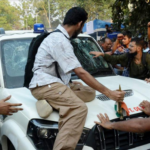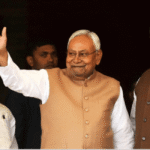Democracy in Action: Phase 1 of India’s Electoral Journey:-
India, the world’s largest democracy, embarks once again on its monumental electoral journey as Phase 1 of voting commences, encompassing 102 parliamentary seats and a staggering 16 crore eligible voters. This pivotal phase sets the stage for a vibrant display of democratic fervor, where millions of citizens exercise their fundamental right to choose their representatives. As the nation stands at the crossroads of change and continuity, Phase 1 of the Indian elections unfolds as a narrative of hope, aspiration, and democratic resilience.  for more information click on this link
for more information click on this link
Historical Evolution of Indian Democracy: India’s tryst with democracy traces its roots back to its independence in 1947. With the adoption of a Constitution that enshrines the principles of liberty, equality, and fraternity, India embarked on a remarkable journey of democratic governance. Over the decades, the Indian electoral process has witnessed significant evolution, navigating through political upheavals, social transformations, and economic reforms. The Election Commission of India, as the custodian of free and fair elections, has played a pivotal role in safeguarding the democratic ethos of the nation.
Electoral Dynamics Across States: Phase 1 of the Indian elections unfolds across a diverse array of states, each characterized by its unique socio-political landscape. From the populous states of Uttar Pradesh and Bihar to the northeastern states of Manipur and Meghalaya, the electoral dynamics vary significantly. In Uttar Pradesh, often considered the political heartland of India, caste equations, regional affiliations, and developmental aspirations shape the electoral discourse. Similarly, in Bihar, the electoral battleground is marked by intricate alliances, caste arithmetic, and the quest for social justice.
In the northeastern states, where the political narrative is often overshadowed by insurgency dynamics and ethnic identities, the electoral process assumes a nuanced significance. Issues of peace, development, and identity resonate strongly among the electorate, reflecting their aspirations for a brighter future. Despite the diversity of regional aspirations and challenges, the common thread that binds these states is the quest for good governance, development, and inclusive growth.
Challenges and Opportunities in Indian Democracy: While the Indian electoral process embodies the spirit of democracy, it is not without its challenges. Electoral malpractices, including vote-buying, intimidation, and misuse of state machinery, continue to pose significant threats to the integrity of the electoral process. Moreover, the proliferation of fake news and misinformation in the digital age presents formidable challenges to informed decision-making and electoral transparency.
However, amidst these challenges lie opportunities for democratic renewal and citizen empowerment. The sheer scale and diversity of the Indian electorate provide a fertile ground for vibrant political discourse, grassroots mobilization, and bottom-up initiatives. The emergence of youth-led movements, women’s participation, and the assertiveness of marginalized communities signal a democratic awakening that transcends traditional fault lines.
Role of Technology in Indian Elections: In recent years, technology has emerged as a powerful enabler in enhancing the transparency and efficiency of the Indian electoral process. The introduction of electronic voting machines (EVMs), voter verification mechanisms, and online voter registration has revolutionized the way elections are conducted in India. However, concerns regarding the vulnerability of electronic systems to hacking and manipulation underscore the need for robust cybersecurity measures and vigilance.
Moreover, the advent of social media has transformed the electoral landscape, enabling political parties to engage directly with voters and mobilize support. However, the unregulated nature of social media poses challenges in terms of misinformation, propaganda, and polarization, necessitating greater scrutiny and regulation.
The Voice of the People: At its core, the Indian electoral process is a celebration of the people’s sovereignty and the power of their voice. As voters queue up outside polling booths, they carry with them not just ink-stained fingers but also the aspirations, hopes, and dreams of millions. Each vote cast is a testament to the enduring spirit of democracy and the collective will of the people to shape their destiny.
Conclusion: Phase 1 of the Indian elections symbolizes much more than just a political contest. It is a reaffirmation of India’s democratic credentials, a reflection of its pluralistic ethos, and a testament to the resilience of its democratic institutions. As the electoral process unfolds across the length and breadth of the nation, it is imperative to cherish the values of democracy, uphold the principles of inclusivity and diversity, and strive towards a more vibrant and participatory democracy for generations to come.




